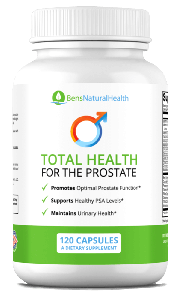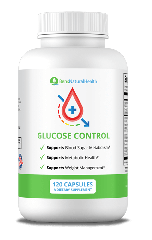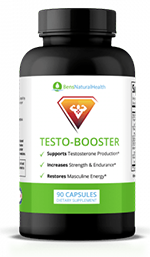- Q: What is Pelvic Pain?
- Q: What does pelvic pain feel like?
- Q: What causes pelvic pain in women?
- Q: When should you see your doctor for pelvic pain?
- Q: What treatment options are available for pelvic pain?
- Q: How to relieve pelvic pain?
- Q: What are some lesser-known causes of stabbing pain in the pelvic area of male patients?
- Q: Can lifestyle factors contribute to what causes pelvic pain?
- Q: How is stabbing pain in the pelvic area typically diagnosed in male patients?
- Q: What are the signs that pelvic pain may indicate a serious condition?
- Key FAQs on Pelvic Pain In Men and Women
- Conclusion
- Our Medical Review Process
- Our Editorial Guidelines
- Medical Disclaimer
- Source
Pelvic pain can be a frustrating and embarrassing condition, manifesting in different ways in men and women.
Every year, about 25% of women suffer from pelvic pain. The estimates for men are at 15%, with some having frequent pain.
We explored this in more detail with Dr. David Letsa, discussing the causes of pelvic pain in both sexes, from endometriosis and ovarian cysts to prostatitis and hernia.
We explored some available treatments, from medication to surgery. Doctor Letsa also added sources from reputable published research, and a medical doctor has reviewed all content to ensure its accuracy. Let’s dive in.
Q: What is Pelvic Pain?
Dr. Letsa answers: Pelvic pain occurs in the pelvic or lower abdominal area, including the region below the waistline and between the hipbones. The pelvic area consists of the uterus, bladder, small intestine, and rectum. Often, the pain doesn’t signify anything life-threatening. Other times, though, it could be a symptom of an underlying or advancing ailment, such as endometriosis or irritable bowel syndrome (IBS). Consult with your doctor when you experience such discomfort.
There are different reasons a person might experience pelvic pain, and the cause can be challenging to determine. For example, a problem with any of the organs in the pelvic area or the surrounding muscles and tissues may cause pain in the pelvic region. In addition, problems with the nerves and blood vessels can also cause pelvic pain.
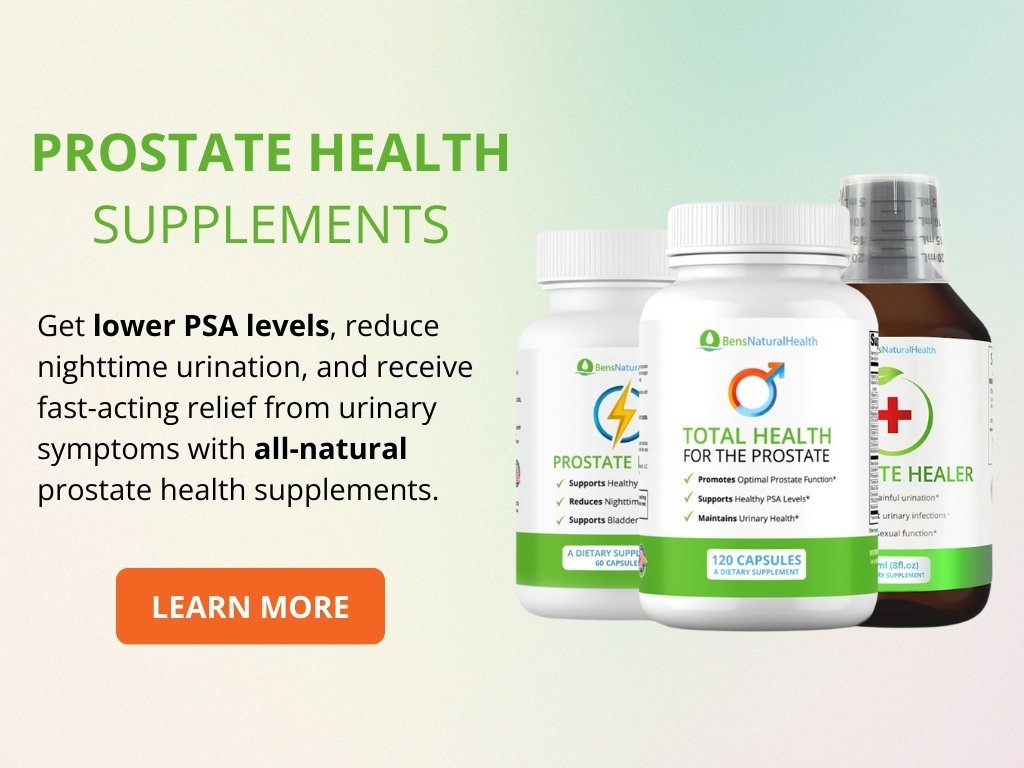
Q: What does pelvic pain feel like?
Dr. Letsa answers: Pelvic pain can manifest in different ways for different people. Some people may experience a sharp, stabbing pain that comes and goes, while others may feel a more general, diffuse pain. It can be constant or intermittent, dull or stabbing. Common symptoms often associated with pelvic disorders include:
- Pain in the lower abdomen: This discomfort can vary in intensity and may be intermittent or constant. It can manifest as sharp or dull aching and may be exacerbated by certain activities or positions.
- Pain during sex: This symptom, known as dyspareunia, can range from mild to severe and may be localized or diffuse. It often leads to avoidance of sexual activities, impacting intimacy and relationships.
- A feeling of pressure in the pelvis: Individuals may describe this sensation as a heavy or full feeling, similar to the sensation of weighing down the pelvic area. This pressure can be persistent and may worsen throughout the day, particularly with prolonged periods of sitting or standing.
- Pain during urination or bowel movements: Discomfort or a burning sensation during these normal bodily functions can indicate underlying issues. This pain may be sharp or cramping and often accompanies other urinary or gastrointestinal symptoms.
- Pain in the hips or buttocks: This can manifest as aching, stiffness, or sharp pain that may radiate from the lower back to the legs. Activities like walking or climbing stairs may exacerbate the discomfort.
- Heaviness in the pelvic area: This sensation of heaviness may be accompanied by a feeling of fullness or swelling, which can affect mobility and comfort levels. It may be more pronounced at the end of the day or after periods of physical activity.
These symptoms can significantly impact daily life and should be evaluated by a healthcare professional for proper diagnosis and treatment.
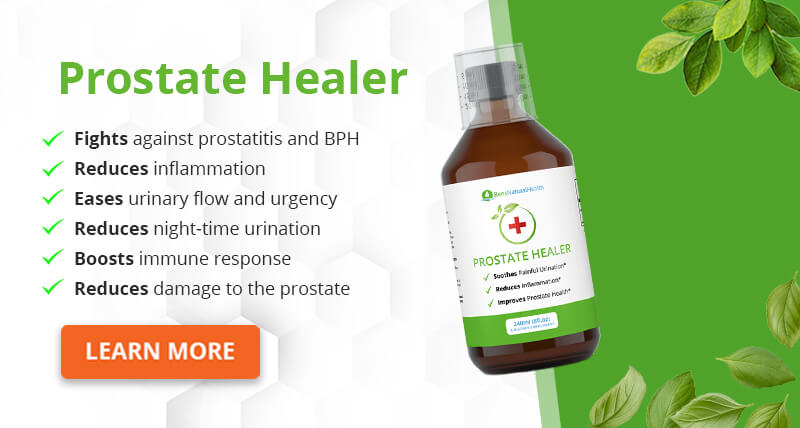
Q: What causes pelvic pain in men?
Dr. Letsa answers: Pelvic pain in men can arise from various conditions, often involving the urinary or reproductive systems. One specific form, stabbing pain in the pelvic area in males, is especially concerning and requires proper diagnosis. Causes include:
- Urinary tract infection (UTI)
- Sexually transmitted infections (STIs) like chlamydia or gonorrhea
- Prostatitis, or inflammation of the prostate
- Hernia, causing pain that worsens with strain.
- Irritable bowel syndrome (IBS). It results in symptoms like stomach cramps, diarrhea, and constipation. It’s usually a lifelong problem.
- Appendicitis, especially if the pain migrates to the lower right side
- Urinary stones often cause sharp or stabbing pain in the pelvic area in males. Kidney stones form due to the accumulation of salts or minerals in the urine, such as calcium. They clump together and crystallize into urinary stones.
- Cystitis, inflammation of the bladder
- Urethral stricture, narrowing of the urethra
- Benign prostatic hyperplasia (BPH), leading to urinary difficulties and discomfort in the pelvis
Q: What causes pelvic pain in women?
Dr. Letsa answers: Women may experience pelvic pain due to reproductive, urinary, or gastrointestinal issues. Common causes include:
Urinary or bladder stones
Many of these causes overlap with those that affect men, showing that what causes pelvic pain can vary but affect both sexes similarly in some conditions. Bladder stones are hard lumps of minerals that can form inside the bladder when the bladder is not empty of urine. They may not cause symptoms if they’re small enough.
- Menstrual cramps
- Ovulation pain
- Interstitial cystitis
- Pelvic inflammatory disease (PID)
- Endometriosis
- Ectopic pregnancy
- Ovarian cysts
- Uterine fibroids: Fibroids are lumps of muscle and fibrous tissue within the uterus. Depending on the type of fibroid, it may cause discomfort in the pelvis or lower back, or pain during sex. Also, some fibroids tend to cause excessive bleeding, cramping, or both during menstruation.
- Tumors
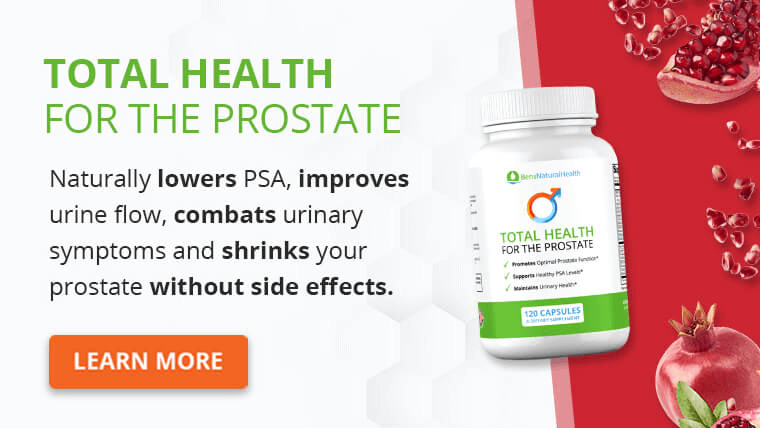
Q: When should you see your doctor for pelvic pain?
Dr. Letsa answers: Pelvic pain is often non-threatening, but there are important warning signs you should not overlook. Consult your doctor if you experience any of the following symptoms:
- Pain lasting more than a month
- Blood in your urine or stool
- Pain during intercourse
- Urinary or fecal incontinence
- Fever and chills
- New or worsening stabbing pain in the pelvic area (for both males and females)
- Nausea, vomiting, or bloating
- Pain that interferes with your daily life
- Pain accompanied by a visible mass or swelling
- Chronic pain in the hip, groin, or lower abdomen
Q: What treatment options are available for pelvic pain?
Dr. Letsa answers: For male patients experiencing stabbing pelvic pain, treatment generally starts with diagnosing and treating issues related to the prostate, urinary system, or gastrointestinal tract.
Managing pelvic pain involves a personalized approach, as the underlying causes vary widely. Here are the key ways pelvic pain is typically addressed:
- Medications: Depending on the diagnosis, your doctor might prescribe pain relievers, antibiotics for infections, hormonal therapies, or antidepressants to help with related symptoms.
- Therapy: Several therapeutic interventions can be helpful. These include physical therapy to strengthen pelvic support, trigger point injections to alleviate muscle pain, psychotherapy to address the emotional impact of chronic pain, and neurostimulation to disrupt pain signals.
- Surgery: Surgical options may be necessary in certain cases. For instance, laparoscopic surgery can remove endometrial tissue in individuals with endometriosis. In more severe or rare situations, a hysterectomy (removal of the uterus, sometimes along with the fallopian tubes or ovaries) may be performed.
- Pain rehabilitation programs: These programs offer long-term strategies for managing chronic pelvic pain, often using a multidisciplinary approach that combines various therapies and interventions.
For male patients experiencing stabbing pain in the pelvic area, treatment typically begins with the diagnosis and treatment of underlying issues related to the prostate, urinary system, or gastrointestinal tract.
Q: How to relieve pelvic pain?
Dr. Letsa answers: Combining home care with medical guidance can effectively alleviate symptoms. Here are some helpful strategies:
- Home Remedies: Consider using heat therapy, taking rest, engaging in gentle stretching exercises, and using over-the-counter pain relievers.
- Diet: It’s important to focus on your diet, as it can significantly influence pelvic pain, particularly in cases of endometriosis. While more research is necessary to fully understand how specific foods or habits affect this condition, some dietary factors may worsen pelvic pain:
- A diet high in trans and saturated fats, as well as processed foods (such as crackers, cookies, and pastries)
- Red meat (including beef, pork, and veal)
- Gluten
- Alcohol
- Caffeine
Conversely, certain foods can help improve chronic pelvic pain related to endometriosis. These include:
- Fibrous foods, such as fruits, vegetables, legumes, brown rice, quinoa, buckwheat, and steel-cut oats.
- Iron-rich foods (dark leafy greens such as spinach, kale, collard greens, cruciferous veggies such as cauliflower, broccoli, Brussel sprouts, beets, berries, stone fruits such as peaches, nectarines, plums or prunes, apples, pears, broccoli, beans, lentils, chickpeas, black beans, fortified grains, nuts, and seeds)
- Foods rich in essential fatty acids and omega-3 (salmon, sardines, wild salmon, herring, black cod, trout, extra virgin olive oil, flaxseed oil, nut-based oils, walnuts, chia seeds, and flax seeds)
- Antioxidant-rich foods are found in colorful fruits and vegetables (oranges, berries, dark chocolate, spinach, and beets)
- Supplements: Vitamin D, E, C, magnesium, and zinc may support pelvic health
Always consult your doctor before starting supplements, especially if you experience chronic or stabbing pain in the pelvic area, male or female. In addition to a healthy diet, supplements can also be beneficial. For example, vitamin D, vitamin E, and magnesium supplements can help ease chronic pelvic pain. For instance, the research involved 59 women with endometriosis who took a 1,200 international units (IU) vitamin E supplement and a 1,000 IU vitamin C supplement. As a result, researchers here observed a reduction in chronic pelvic pain and a decrease in inflammation. [4] In another study, female participants with endometriosis took zinc and supplements of vitamins A, C, and E. Researchers observed that it decreased peripheral oxidative stress markers and enhanced antioxidant markers in women. [5] Before taking any nutritional supplements or herbs, consult your doctor.
Q: What are some lesser-known causes of stabbing pain in the pelvic area of male patients?
Dr. Letsa answers: Beyond common causes like prostatitis or urinary tract infections (UTIs), several lesser-known conditions can contribute to pelvic pain:
- Pelvic floor dysfunction: It occurs when the pelvic muscles become tight, weak, or uncoordinated. It can lead to sharp, debilitating pain during activities such as sitting, standing, or physical exertion. Symptoms may worsen with specific movements or prolonged positions and can also affect urinary and sexual function.
- Pudendal neuralgia: It involves irritation or entrapment of the pudendal nerve, which provides sensation to the genital area. Patients often describe stabbing, burning, or aching pain deep in the pelvis, sometimes exacerbated by sitting or certain physical activities. This pain can be severe and impact daily life, including the ability to engage in sexual activity or sit comfortably.
- Chronic pelvic pain syndrome (CPPS): Frequently occurring in men, CPPS is characterized by persistent pelvic pain without a clear infectious cause. This syndrome is complex and can involve a combination of inflammatory and non-inflammatory factors. Individuals may experience discomfort in the lower abdomen, perineum, or genitals, often accompanied by urinary symptoms such as urgency or frequency.
- Post-surgical adhesions: Following surgeries, especially those involving the lower abdomen or pelvis (such as hernia repair), scar tissue can develop. These adhesions can create internal tension, leading to localized sharp pain in the pelvic area. The pain may be aggravated by movement or certain postures, and in some cases, can necessitate further medical intervention if symptoms persist.
Understanding these conditions can aid in better diagnosis and management of pelvic pain, emphasizing the importance of comprehensive evaluation by a healthcare professional.
Q: Can lifestyle factors contribute to what causes pelvic pain?
Dr. Letsa answers: Yes, lifestyle choices can increase the risk of pelvic pain. Chronic constipation, sedentary behavior, poor posture, dehydration, or heavy lifting can exacerbate existing conditions. Pelvic pain can also be triggered or worsened by stress, poor sleep, or high-fat diets. A healthy lifestyle often plays a key role in preventing and managing both diffuse and stabbing pelvic pain.
Q: How is stabbing pain in the pelvic area typically diagnosed in male patients?
Dr. Letsa answers: Diagnosing the cause of pelvic pain typically involves a comprehensive approach, including a review of your medical history, a physical examination, and various diagnostic tests. These tools help doctors pinpoint the underlying cause of pelvic pain and tailor treatment appropriately.
Common diagnostic tests include:
- Urinalysis and urine culture: To detect urinary tract infections or other urinary tract issues.
- Pelvic ultrasound or CT scan: Imaging tests to visualize organs and structures in the pelvic area.
- Digital rectal exam: Especially for male patients, to assess prostate health.
- STD screening: To rule out sexually transmitted infections.
- Cystoscopy: If urethral or bladder obstruction is suspected, a thin, flexible tube with a camera is inserted to examine the inside of the bladder and urethra.
Q: What are the signs that pelvic pain may indicate a serious condition?
Dr. Letsa answers: When it comes to pelvic pain, specific symptoms can signal a more serious underlying condition that requires immediate medical attention. As Dr. Letsa advises, these “red flag” symptoms shouldn’t be ignored:
- Fever with pain: This combination can indicate an infection, such as pelvic inflammatory disease (PID) in females or prostatitis in males, which may require urgent treatment.
- Pain with blood in urine or stool: The presence of blood can indicate issues within the gastrointestinal or urinary tract, potentially including tumors, severe infections, or inflammatory conditions such as inflammatory bowel disease (IBD).
- Unexplained weight loss: Significant weight loss without any intentional changes in diet or exercise, when accompanied by pelvic pain, can be a symptom of certain cancers, such as ovarian or uterine cancer, or other systemic illnesses.
- Pain with vomiting or severe bloating: These symptoms, especially if acute or worsening, could suggest a bowel obstruction, appendicitis, or other acute abdominal emergencies that need prompt diagnosis and intervention.
- New onset of stabbing pelvic pain in males or females over 50: While many causes of pelvic pain are benign, new, sharp pain in this age group can be a warning sign for conditions like certain cancers, diverticulitis, or vascular issues that are more prevalent later in life.
In the presence of any of these warning signs, it is crucial to seek immediate medical evaluation to rule out potentially dangerous conditions and ensure appropriate and timely treatment.
Key FAQs on Pelvic Pain In Men and Women
Q: Can pelvic pain be linked to past emotional trauma or psychological conditions?
Dr. Letsa answers: There’s a strong and well-documented link between emotional trauma, psychological conditions like anxiety and depression, mental health, and chronic pain. The brain and the body are intricately connected, and stress, trauma, or emotional distress can manifest physically. This can occur through various mechanisms, including increased muscle tension in the pelvic floor, altered pain perception pathways in the brain, and changes in the nervous system’s regulation of pain. Addressing these psychological factors is often a crucial part of managing chronic pelvic pain.
Q: Can tight clothing or poor ergonomics contribute to pelvic pain?
Dr. Letsa answers: While they might not be primary causes, tight clothing and poor ergonomics can undoubtedly contribute to or exacerbate pelvic pain. Tight clothing, especially around the waist or groin, can restrict blood flow, irritate nerves, and increase pressure on pelvic structures. Similarly, poor ergonomics, such as prolonged sitting in an unsupported posture or habits that lead to slouching, can place undue strain on the spine, pelvis, and surrounding musculature, resulting in muscle imbalances, tension, and ultimately, pain.
Q: Are there specific sports or physical activities that may trigger pelvic pain?
Dr. Letsa answers: Yes, certain sports and physical activities can definitely trigger or worsen pelvic pain, particularly those that involve high-impact, repetitive movements, or significant strain on the core and pelvic floor. Examples include long-distance running, high-impact aerobics, weightlifting (especially with improper form), cycling (due to pressure on the perineum), and sports that involve sudden stops, starts, or twisting motions. Activities that involve excessive Valsalva maneuvers (holding your breath and bearing down) can also increase intra-abdominal pressure and strain the pelvic floor.
Q: Can gastrointestinal disorders mimic pelvic pain symptoms?
Dr. Letsa answers: Very much so. Gastrointestinal disorders are a common mimic of pelvic pain. Conditions like Irritable Bowel Syndrome (IBS), inflammatory bowel disease (Crohn’s disease, ulcerative colitis), diverticulitis, and even chronic constipation or severe gas can cause pain that is perceived in the pelvic region. This is due to the proximity of the digestive organs to the pelvic organs and the shared nerve pathways that connect them. It’s essential to consider a thorough gastrointestinal evaluation when investigating pelvic pain.
Q: Does pelvic pain always originate in the pelvis itself?
Dr. Letsa answers: No, not always. While many cases of pelvic pain do originate from structures within the pelvis (such as the reproductive organs, bladder, or pelvic floor muscles), pain can also be referred to the pelvis from other areas. This is known as referred pain. Familiar sources of referred pain to the pelvis include the lower back (lumbar spine), hips, abdominal organs (as mentioned with GI issues), and even conditions affecting the nerves that supply the pelvic region. A comprehensive evaluation is necessary to pinpoint the trustworthy source of the pain.
Q: Can hormone fluctuations worsen pelvic pain in women?
Dr. Letsa answers: Absolutely. Hormone fluctuations can significantly impact pelvic pain in women. Estrogen and progesterone, the primary female hormones, play a role in inflammation, nerve sensitivity, and muscle tone. Conditions like endometriosis, adenomyosis, and even painful bladder syndrome (interstitial cystitis) can be exacerbated by cyclical hormonal changes throughout the menstrual cycle. Many women also report increased pelvic pain during ovulation, menstruation, and perimenopause due to these hormonal shifts.
Conclusion
Pelvic pain can stem from a wide range of causes, from common infections to more complex conditions affecting the reproductive, urinary, or gastrointestinal systems. As Dr. Letsa emphasized, understanding the root cause is essential for effective treatment.
Whether you’re dealing with chronic discomfort or sudden, stabbing pain, a thorough medical evaluation is key. With the right diagnosis, most cases of pelvic pain can be managed or resolved, offering relief and improving quality of life.
Our Medical Review Process
At Ben’s Natural Health, we prioritize accuracy, transparency, and scientific integrity. Qualified medical professionals write all health content and undergo review every 12 to 24 months to ensure it stays current and evidence-based. We cite only peer-reviewed research from reputable medical journals, providing full references and direct links to support our commitment to credibility. Learn more about our medical review process and research standards.
Our Editorial Guidelines
For more than 25 years, Ben’s Natural Health has been a reliable source of science-backed natural health information. Our editorial process is designed to uphold the highest standards of accuracy and trustworthiness. Every article is written by certified experts—doctors, nutritionists, dietitians, fitness professionals, and surgeons—and independently reviewed for accuracy. Contributor bios and credentials are clearly listed at the top of each article to ensure full transparency. Read more about our editorial standards.
Medical Disclaimer
The content on this website is intended for informational and educational purposes only and should not be taken as medical advice, diagnosis, or treatment. While our articles are developed and reviewed by licensed healthcare professionals, they may not reflect your unique health circumstances. Always consult a qualified medical professional with any questions or concerns. Do not delay or avoid seeking professional care based on information you’ve read here. Your use of this content is at your own risk.



